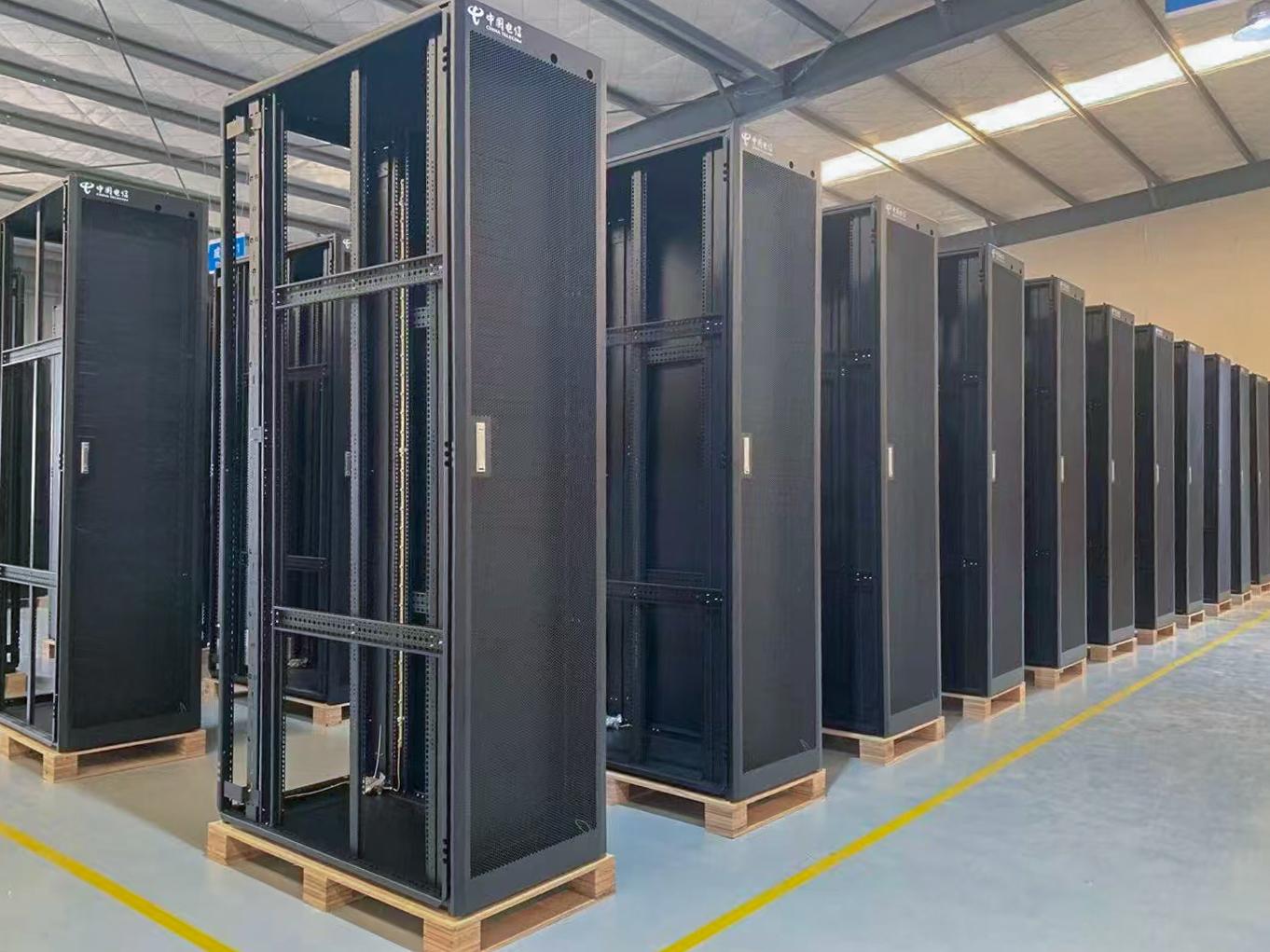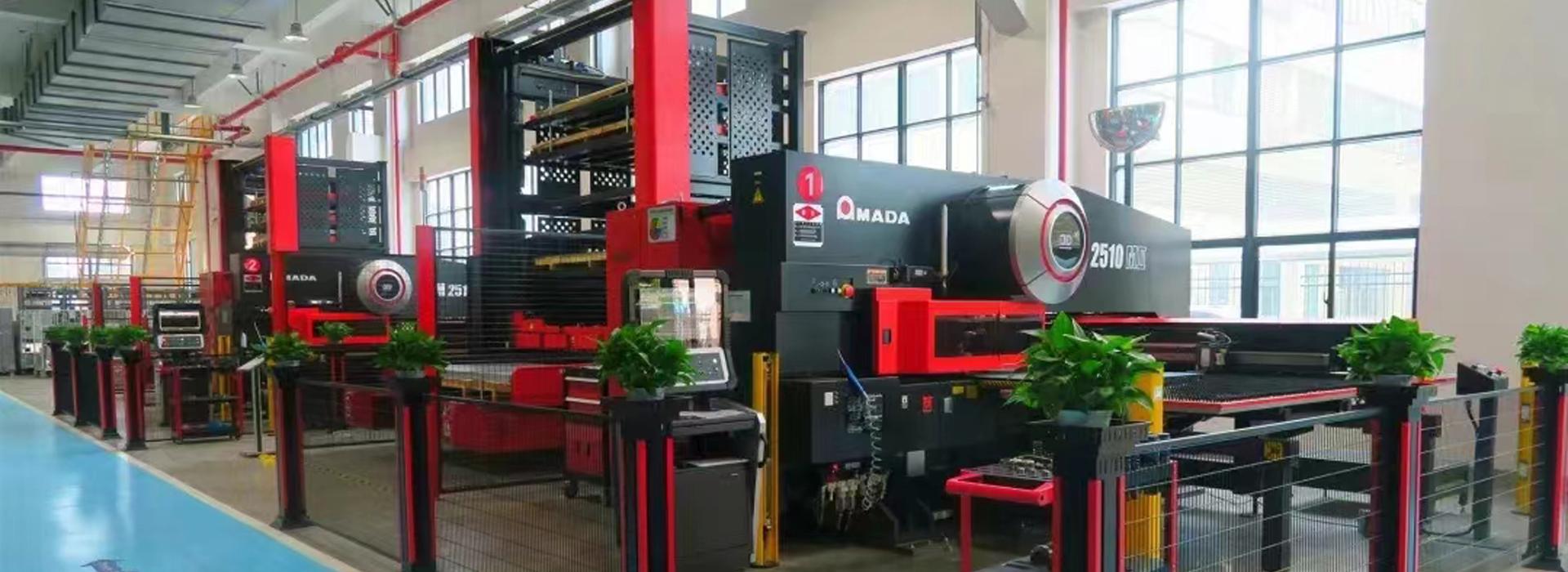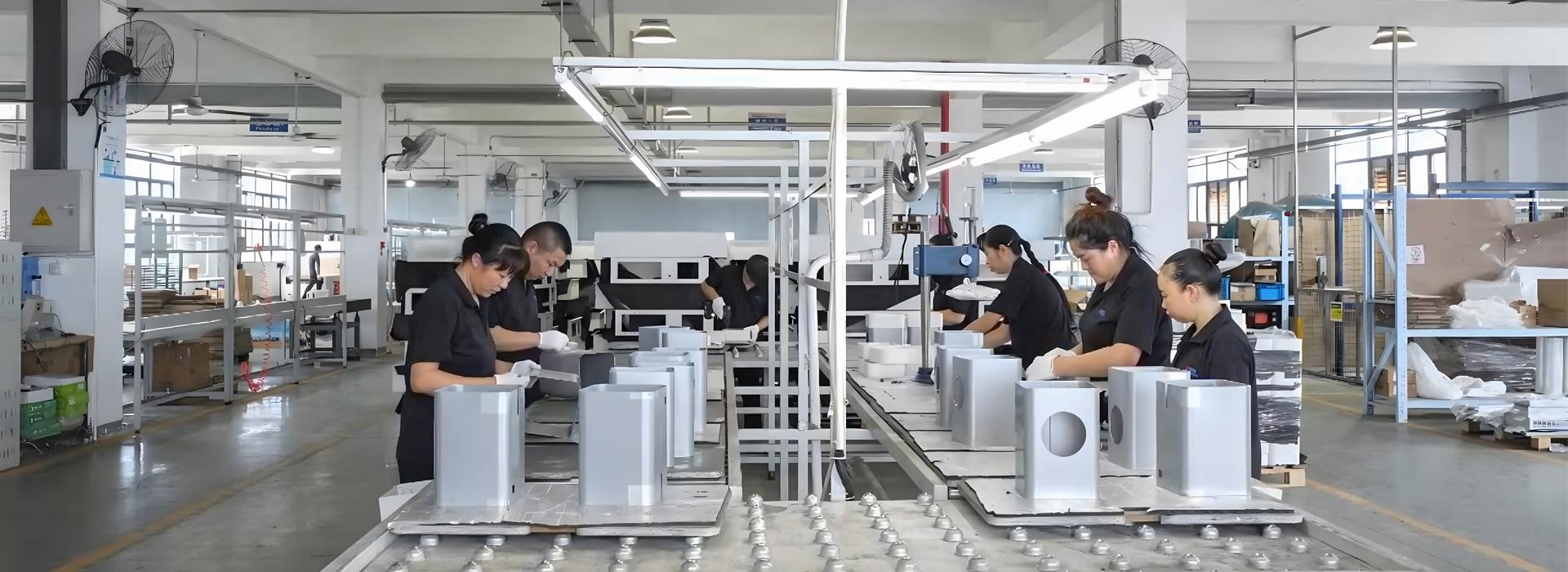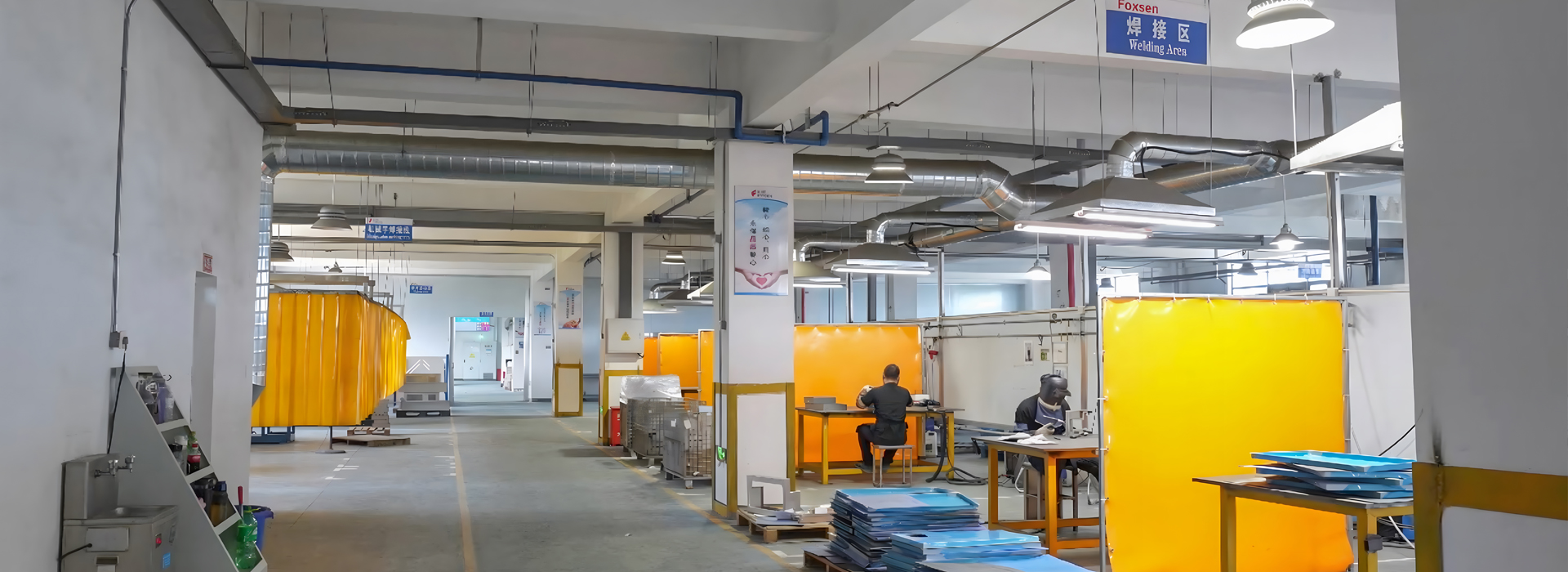
Choosing the right material for telecommunication sheet metal parts plays a vital role in ensuring the reliability of your equipment. Stainless steel and aluminum alloy offer distinct advantages that influence their suitability for different applications. Stainless steel delivers exceptional strength and durability, making it ideal for high-stress environments. Aluminum alloy, on the other hand, excels in lightweight designs and malleability, reducing overall weight without sacrificing functionality.
Corrosion resistance further separates the two. Stainless steel, especially grades like 304 and 316, withstands harsh conditions effectively. Aluminum alloy requires surface treatments to prevent corrosion in certain environments. Cost considerations also come into play, as aluminum alloy is often more affordable but less durable. So, which is better? The answer depends on your specific needs, including environmental exposure and design priorities.
Key Takeaways
Stainless steel is strong and lasts long. It works well in tough telecommunication jobs.
Aluminum alloy is light and cheaper. It’s good for portable setups and low-cost projects.
Stainless steel handles rust better in bad weather. Aluminum needs special coatings to avoid rust.
Aluminum alloy is great for heat and electricity. Stainless steel doesn’t work as well for these.
Think about your project needs. Use stainless steel for outdoor strength and aluminum for indoor lightweight use.
Main Differences Between Aluminum and Stainless Steel

Strength and Durability
When comparing the strength and durability of stainless steel and aluminum alloy, you’ll notice significant differences. Stainless steel stands out for its exceptional strength, making it ideal for demanding applications where structural integrity is critical. Its high tensile strength allows it to withstand heavy loads and resist deformation under stress. This makes stainless steel a preferred choice for telecommunication parts exposed to mechanical forces or vibrations.
Aluminum alloy, while not as strong as stainless steel, offers adequate strength for many applications. However, its lower strength means it may not perform as well in high-stress environments. For instance, in situations requiring long-term durability, stainless steel often outlasts aluminum alloy. This strength comparison highlights why stainless steel is commonly used in applications requiring maximum reliability.
Weight and Strength-to-Weight Ratio
Weight plays a crucial role in material selection, especially for telecommunication components. Aluminum alloy is significantly lighter than stainless steel, weighing about one-third as much. This lightweight property makes aluminum alloy an excellent choice for applications where reducing overall weight is a priority, such as in portable or aerial installations.
However, when you consider the strength-to-weight ratio, the decision becomes more nuanced. While stainless steel is heavier, its superior strength compensates for the added weight in many cases. For example, in stationary installations where weight comparison is less critical, stainless steel’s strength-to-weight ratio makes it a reliable option. On the other hand, aluminum alloy’s lightweight nature can simplify transportation and installation, especially in large-scale projects.
Here’s a quick comparison of key properties:
Corrosion Resistance
Corrosion resistance is another critical factor to consider. Stainless steel, particularly grades like 304 and 316, offers excellent corrosion resistance due to its chromium content. This makes it highly suitable for outdoor or marine environments where exposure to moisture and salt is common. Stainless steel resists rust and pitting, ensuring long-term performance even in harsh conditions.
Aluminum alloy also provides good corrosion resistance, but it may require additional surface treatments to perform well in extreme environments. For example, anodization can enhance its resistance to oxidation and wear. However, in environments with prolonged exposure to saltwater or industrial chemicals, stainless steel often outperforms aluminum alloy.
To illustrate, here’s a summary of corrosion resistance test results under simulated marine conditions:
This table demonstrates how stainless steel compositions excel in resisting corrosion, making them a reliable choice for telecommunication parts exposed to challenging environments.
Thermal and Electrical Conductivity
Thermal and electrical conductivity are essential factors when selecting materials for telecommunication sheet metal parts. These properties influence how efficiently heat and electricity move through the material, which can impact performance in specific applications.
Stainless steel has relatively low thermal and electrical conductivity compared to aluminum alloy. Its thermal conductivity ranges from 15 to 25 W/m·K, depending on the grade. This lower conductivity makes stainless steel less effective at dissipating heat, which can be a disadvantage in applications requiring efficient heat management. Similarly, its electrical conductivity is limited, making it less suitable for components that need to conduct electricity.
Aluminum alloy, on the other hand, excels in both thermal and electrical conductivity. Its thermal conductivity typically ranges from 150 to 230 W/m·K, making it highly effective at transferring heat. This property is particularly beneficial for telecommunication parts exposed to high temperatures or requiring heat dissipation, such as antennas or signal transmission components. Aluminum alloy also offers excellent electrical conductivity, which is why it is often used in electrical wiring and conductive parts.
When deciding between stainless steel and aluminum alloy, consider the specific needs of your application. If heat dissipation or electrical conductivity is critical, aluminum alloy is the better choice. However, if strength and durability outweigh these factors, stainless steel may still be the preferred option.
Cost and Availability
Cost and availability play a significant role in material selection for telecommunication sheet metal parts. These factors directly impact project budgets and timelines.
Stainless steel is known for its durability and corrosion resistance, but it comes at a higher cost. The production process and raw material expenses contribute to its premium price. While stainless steel is widely available, its cost can be a limiting factor for projects with tight budgets. However, its long-term performance often justifies the investment, especially in demanding environments.
Aluminum alloy is more cost effective than stainless steel. Its lower production costs and abundant availability make it an attractive option for budget-conscious projects. Aluminum price varies depending on the alloy and market conditions, but it is generally more affordable than stainless steel. This affordability, combined with its lightweight nature, makes aluminum alloy a popular choice for large-scale installations where weight comparison and cost savings are priorities.
When weighing the main differences between aluminum and stainless steel, consider both the upfront costs and long-term benefits. Stainless steel may require a higher initial investment but offers unmatched durability. Aluminum alloy provides a more economical solution, especially for applications where weight and cost are critical factors.
Applications of Telecommunication Sheet Metal Parts

Enclosures and Housings
Enclosures and housings play a critical role in protecting sensitive telecommunication equipment from environmental factors and physical damage. These components must provide durability, thermal management, and corrosion resistance to ensure long-term reliability. Stainless steel is often the material of choice for enclosures due to its exceptional strength and resistance to harsh conditions. It performs well in outdoor environments, where exposure to moisture, salt, and temperature fluctuations is common. Aluminum alloy, however, offers a lightweight alternative, making it easier to transport and install, especially for large-scale projects.
The demand for high-performance enclosures has grown significantly with the expansion of 5G networks. This growth has increased the need for robust telecommunication sheet metal parts that can withstand the demands of modern infrastructure, such as base stations and antennas. Manufacturers often use advanced surface treatments like anodization or powder coating to enhance the durability and aesthetic appeal of these housings. These treatments improve corrosion resistance and ensure the enclosures maintain their structural integrity over time.
Some notable case studies highlight the versatility of materials used in enclosures and housings:
Mass Production of Small Button Parts
Injection Molding of VR Headset Front Cover
Engine Valve Cover Manufacturing By Die Casting Process
Silicone Injection Molded Baby Mask
These examples demonstrate the precision and adaptability of sheet metal processing techniques, which are essential for creating high-quality enclosures tailored to specific telecommunication needs.
Brackets and Mounting Components
Brackets and mounting components serve as the backbone of telecommunication infrastructure. They provide the necessary support to secure equipment like antennas, cables, and other hardware. These parts must be strong enough to handle mechanical stress while maintaining stability under various conditions. Stainless steel is a popular choice for brackets due to its high tensile strength and resistance to deformation. It ensures that mounted equipment remains secure, even in high-stress environments.
When weight reduction is a priority, aluminum alloy becomes an excellent alternative. Its lightweight nature simplifies installation and reduces the overall load on supporting structures. This is particularly beneficial for aerial installations or portable setups. Knowing when to use aluminum can help you optimize both performance and cost. For example, aluminum brackets are ideal for indoor applications or areas with minimal environmental exposure, where corrosion resistance is less critical.
The precision of sheet metal fabrication ensures that brackets and mounting components meet exact specifications. This level of accuracy is crucial for maintaining the alignment and functionality of telecommunication systems. Whether you choose stainless steel or aluminum alloy, the right material can significantly enhance the reliability of your infrastructure.
Antennas and Signal Transmission Parts
Antennas and signal transmission parts are at the heart of telecommunication systems. These components require materials with excellent thermal and electrical conductivity to ensure efficient signal propagation. Aluminum alloy excels in this area, offering superior conductivity compared to stainless steel. Its ability to dissipate heat effectively makes it a preferred choice for antennas exposed to high temperatures or requiring rapid heat transfer.
Experimental studies have demonstrated the effectiveness of material choices in antenna design. For example, numerical and experimental demonstrations of transient antenna designs have shown how waveform-selective metasurface lines can optimize signal propagation. The following table summarizes key findings:
Additionally, manufacturing techniques play a significant role in antenna performance. The table below highlights the impact of different methods on antenna gain:
These findings emphasize the importance of selecting the right material and manufacturing process for antennas and signal transmission parts. While aluminum alloy offers advantages in conductivity and weight, stainless steel remains a reliable option for applications requiring durability and corrosion resistance.
Aluminum vs Stainless Steel: Pros and Cons
Advantages of Stainless Steel
Stainless steel offers unmatched durability and strength, making it ideal for telecommunication sheet metal parts. Its high tensile strength ensures that components can withstand heavy loads and mechanical stress without deforming. You’ll find stainless steel particularly useful in outdoor applications due to its excellent corrosion resistance. The chromium layer protects against rust and pitting, even in harsh environments like coastal areas or industrial zones.
Another advantage lies in its aesthetic appeal. Stainless steel maintains a polished, professional look over time, which is essential for enclosures and housings visible to customers. Its resistance to wear and tear also reduces maintenance costs, making it a long-term investment for telecommunication infrastructure.
Disadvantages of Stainless Steel
Despite its benefits, stainless steel has some limitations. Its weight can be a challenge, especially for applications requiring lightweight designs. You may find it less suitable for portable or aerial installations due to its heaviness. Additionally, stainless steel’s lower thermal and electrical conductivity makes it less effective for components requiring efficient heat dissipation or electrical transmission.
Working with stainless steel can also be more labor-intensive. Its hardness makes it difficult to manipulate during fabrication, increasing production time and costs. While it offers durability, the upfront expense may not align with budget-conscious projects.
Advantages of Aluminum Alloy
Aluminum alloy stands out for its lightweight nature and versatility. You’ll appreciate its ease of handling during transportation and installation, especially for large-scale projects. Its excellent strength-to-weight ratio makes it a cost-effective choice for applications where reducing overall weight is crucial.
The material’s thermal and electrical conductivity is another key advantage. Aluminum alloy efficiently dissipates heat, making it ideal for antennas and signal transmission parts exposed to high temperatures. Studies, such as those by Dannemann et al. and Magarajan et al., highlight aluminum alloy’s superior performance in applications requiring heat management and ballistic resistance.
Additionally, aluminum alloy offers good corrosion resistance, especially when treated with anodization or powder coating. These surface treatments enhance its durability, ensuring long-term reliability in various environments. Its malleability also simplifies fabrication, allowing you to create complex designs with ease.
Disadvantages of Aluminum Alloy
While aluminum alloy offers many advantages, it also comes with certain drawbacks that you should consider. One of the most notable disadvantages is its lower strength compared to stainless steel. This makes it less suitable for applications requiring high structural integrity or the ability to withstand heavy loads. For example, in environments with significant mechanical stress, aluminum alloy may deform or fail more quickly than stainless steel.
Another limitation lies in its susceptibility to surface damage. Aluminum alloy is softer than stainless steel, which makes it more prone to scratches, dents, and wear over time. This can affect the appearance and functionality of components, especially in high-traffic or abrasive environments. If durability is a priority, this characteristic might pose a challenge.
Corrosion resistance, while generally good, can also be a concern in extreme conditions. Without proper surface treatments like anodization or powder coating, aluminum alloy may corrode when exposed to saltwater or industrial chemicals. These additional treatments increase production costs and may require periodic maintenance to ensure long-term performance.
Thermal expansion is another factor to keep in mind. Aluminum alloy expands more than stainless steel when exposed to heat. This can lead to dimensional changes in components, potentially affecting their fit and performance in temperature-sensitive applications. You’ll need to account for this property during the design phase to avoid complications.
Finally, aluminum alloy has a lower melting point than stainless steel. This makes it less suitable for applications involving high temperatures, where material stability is crucial. When comparing aluminum vs stainless steel, these disadvantages highlight why stainless steel remains the preferred choice for demanding environments.
Understanding the differences between aluminum and stainless steel helps you make informed decisions for telecommunication sheet metal parts. Stainless steel offers superior strength and corrosion resistance, making it ideal for outdoor applications exposed to harsh conditions. Aluminum alloy provides lightweight and cost-effective solutions, especially for indoor setups or components requiring thermal conductivity.
You should evaluate your project needs carefully. Outdoor environments demand durability and resistance to moisture, favoring stainless steel. Indoor installations benefit from aluminum’s lightweight nature and affordability. Balancing performance, cost, and environmental factors ensures you select the right material for reliable and efficient telecommunication systems.
FAQ
What factors should you consider when choosing between stainless steel and aluminum alloy?
You should evaluate strength, weight, corrosion resistance, thermal conductivity, and cost. Stainless steel works better for outdoor or high-stress environments. Aluminum alloy suits lightweight designs and applications needing heat dissipation. Match the material to your project’s specific requirements.
Can aluminum alloy handle outdoor conditions effectively?
Yes, but only with proper surface treatments like anodization or powder coating. These treatments improve its corrosion resistance. Without them, aluminum alloy may degrade in harsh environments, especially with prolonged exposure to saltwater or industrial chemicals.
Why is stainless steel preferred for outdoor telecommunication parts?
Stainless steel resists rust and pitting due to its chromium content. It performs well in harsh conditions, including moisture, salt, and temperature fluctuations. This durability makes it ideal for outdoor applications requiring long-term reliability.
Is aluminum alloy more cost-effective than stainless steel?
Yes, aluminum alloy generally costs less due to lower production expenses. Its lightweight nature also reduces transportation and installation costs. However, stainless steel’s durability may offer better value for long-term projects.
Which material is better for heat management in telecommunication parts?
Aluminum alloy is better for heat management. Its high thermal conductivity allows efficient heat dissipation, making it ideal for antennas and signal transmission components. Stainless steel, with lower thermal conductivity, is less effective in such applications.





